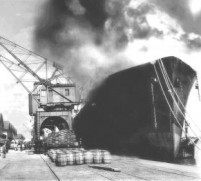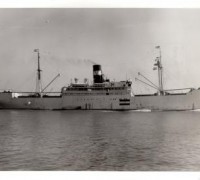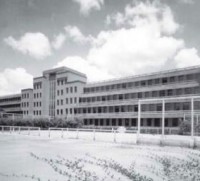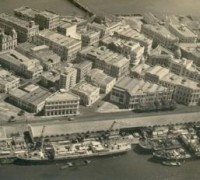CAMP INGRAM RECIFE * - CAMP INGRAM *
10)THE FOURTH FLEET FARM
Of all the developments that have occurred around the Recife, perhaps the only intended to give results in a longer term was the desired experimental farm by Admiral Ingram. The food supply program for Frank McCann, originated: In Brazil fear that US troops, with their consumption, exhausted the meager funds existing in the surrounding areas to air bases, the need to feed the nationals and reduce dependence on ocean shipping. The Axis propaganda exploited this fear and the program of food was the American response. The idea came from a farm previously established near Natal for three agricultural technicians of the Office of Supply Division of the Interamerican Affairs Coordinator. The "Farm Nelson Rockefeller" was organized by Kadow doctors, Griffing, and Mr. Johnson in the Natal surroundings, providing food for the large number of US troops serving in the Air Force Base Parnamarim.
Admiral Ingram and General Walsh interested in this agricultural experience, being suggested by the latter, the three technicians hold out their activities to the area of Recife. The objective was largely to alleviate the burden on the possible shortage in food supply in Brazil, burdened by the US personnel influx. In August 1943, the Admiral asked the Federal Interventor an area available in Recife neighborhoods to be created a farm. The interventor of the state of Pernambuco, Agamenon Magalhaes granted an area of 125 acres, located midway between Tejipio and Varzea, next to the Brazilian agricultural experimental station.
The land at that time looked like a desert, covered with trees and undergrowth, but contained a small lake. At the request of Admiral, Mr. Johnson superficially examined the proposed site. It would be nice, he said, to the raising of pigs and chickens and reasonable for vegetables. To be given the nod to go ahead, Johnson began to clear the land using tractors and taking his team 14 men from the US Navy and numerous local workers. Later, when the farm had gone into production, it cut the number of sailors to four and employed a small group of Brazilians. About sixty acres were intended for cultivation. In November, the farm began producing vegetables for Knox Dispensary, especially lettuce, peppers and corn.
The first pigs were kept "feeders", acquired the best stock in the interior of Brazil, fattened with waste from Camp Ingram and Ibura Field, and strengthened with corn. Soon the farm started its own breeding program, with males and females selected finally becoming independent of external reinforcement. From November 1943 to the end of September 1944, the farm slaughtered between 50 and 60 tons of pork. The chickens have come together to pigs in importance. A good laying hens was brought from the Minister of Agriculture farm. In this plot, other chickens were acquired from various places, so that the farm has reached the number of two thousand birds. They provide a total of nearly 100 thousands eggs in the first year. Mr. Johnson had the idea of the farm also produce broilers. These were created in batches, reaching maintain at any given time, about 7,500 birds ready for slaughter. In addition to pork, chicken and eggs, the farm produced tons of green corn and potatoes. The main crops of the farm were: lettuce, peppers, carrots and beets. The tomatoes, though in large numbers, did not thrive well.
Other crops planted later included peanuts and soybeans. Finally, the farm produced flowers for Naval Dispensary and religious services. The facility consisted of nine court houses, three houses (capacity of 500 birds each) for laying hen and eleven of farrowing. Although in northeastern Brazil there is the incidence of heavy rainfall, these are seasonal, causing the need for additional irrigation for some crops. The lake provided water, being built on the farm two tanks for irrigation. The name of the Institution in English was "Fourth Fleet Farm"; in Portuguese "Fazenda Cruzeiro do Sul".
She just came to be opened at 15 pm on March 11, 1944, were present authorities and comitiva had arrived in Rio de Janeiro. According to the report of the "Folha da Manhã": Because of find is absent Admiral Ingram, the opening act of coated is simplicity and before cutting the symbolic ribbon spoken agronomist Honorato de Freitas, technical assistant CBA to tell those present that there was a living example of the Brazilian-American cooperation, carrying out a work conceived by Admiral Ingram and approved by the minister Apollonius Sales, whose work was done with the cooperation of C.B.A. It involved - he emphasized the speaker - a project organized to resolve supply difficulties of American sailors who are in operations in the Northeast and is designed as a work typically in the war effort.
Those attending the act length toured the facilities of the Farm, including the residence of Admiral Ingram, equipped with every comfort and built in a simple style. The delegation that came to the Northeast was made by Mr. Oscar Guedes, president of the Brazilian-American Commission of foodstuff Production, who was accompanied by Mr. William Brister, director of the Food Supply Division, Washington and personal representative of Nelson Rockefeller coordinator; Guy Bush, agricultural attache at the US Embassy; Kenneth Kadow, US representative in C.B.A. and Honorato Freitas, his assistant and a journalist of the newspaper "Folha Carioca".
In addition to demonstrating a great benefit in terms of food supply, the farm has caused great interest among Brazilians.They realized the obvious difference between the products derived from the Fleet farm and those usually produced in the neighborhood. On Sundays and holidays local families visited the farm. Agronomy students came even from outside the state of Pernambuco, to observe and study the techniques employed. There, therefore, has always been the understanding that when the American Police had no further need of the farm, this would be delivered to the government of Pernambuco.
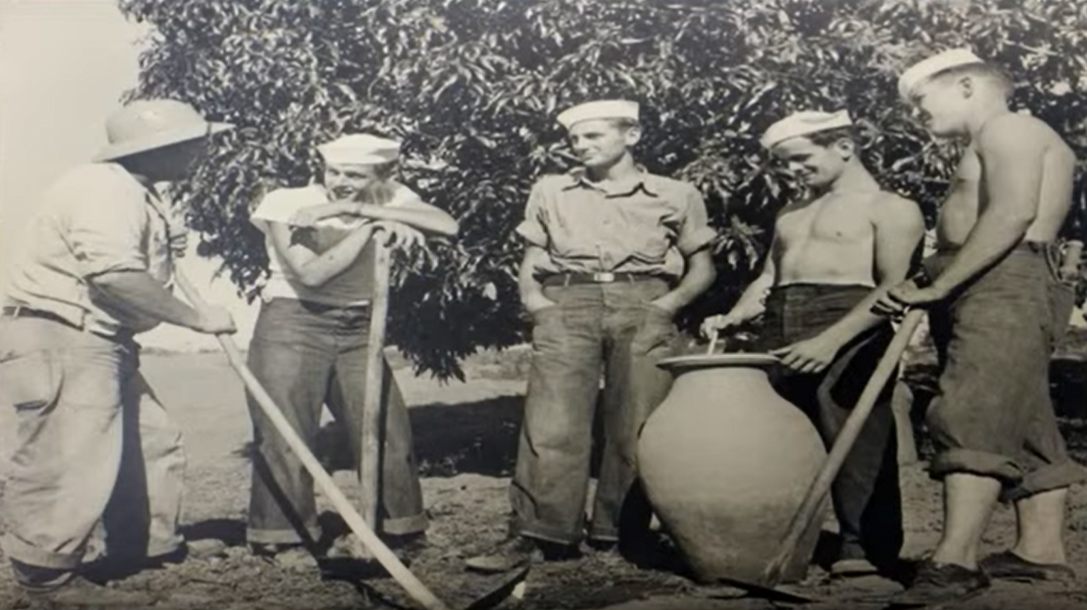
US Navy personnel seen working at the Fourth Fleet Farm.
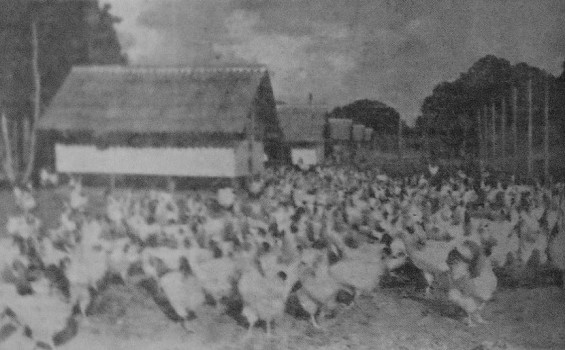
Above, a detail from the chicken farming maintained by the U.S. Navy to provide fresh vegetables, pork and eggs to the American sailors stationed at Recife.
Hyperwar - Commander South Atlantic Force. U.S. Naval Administration in WW II
